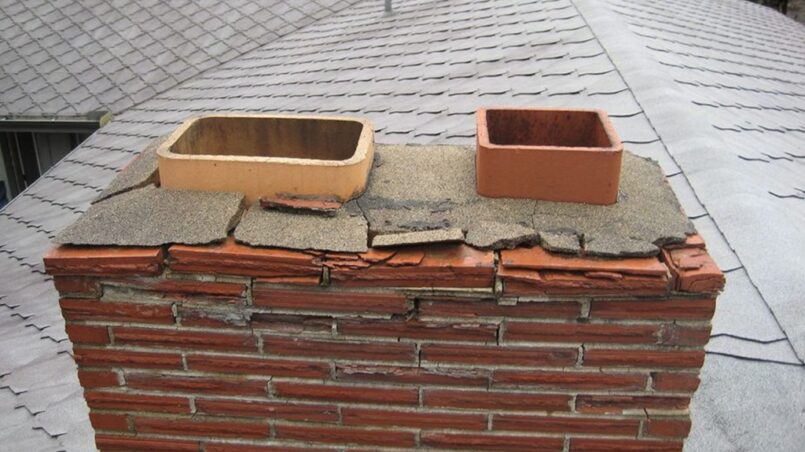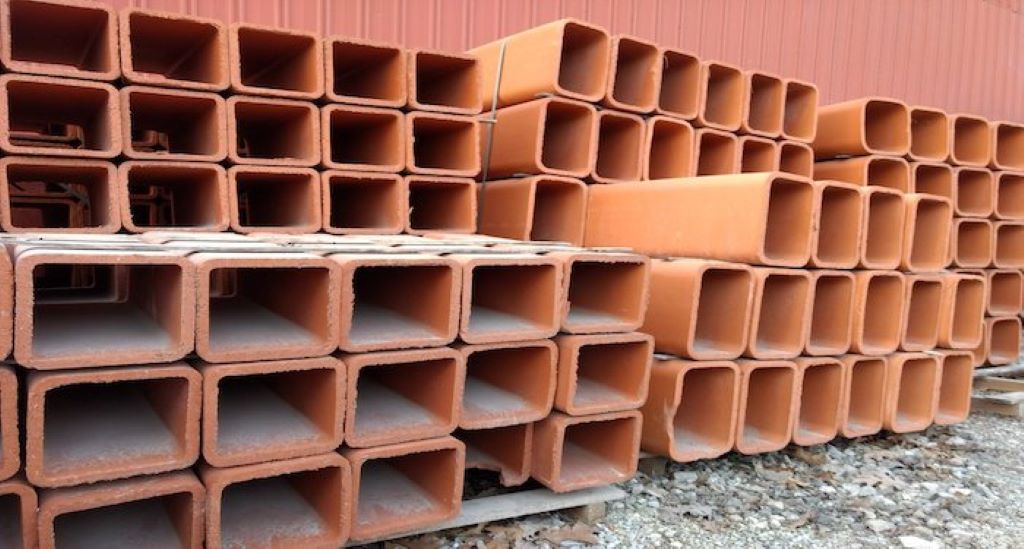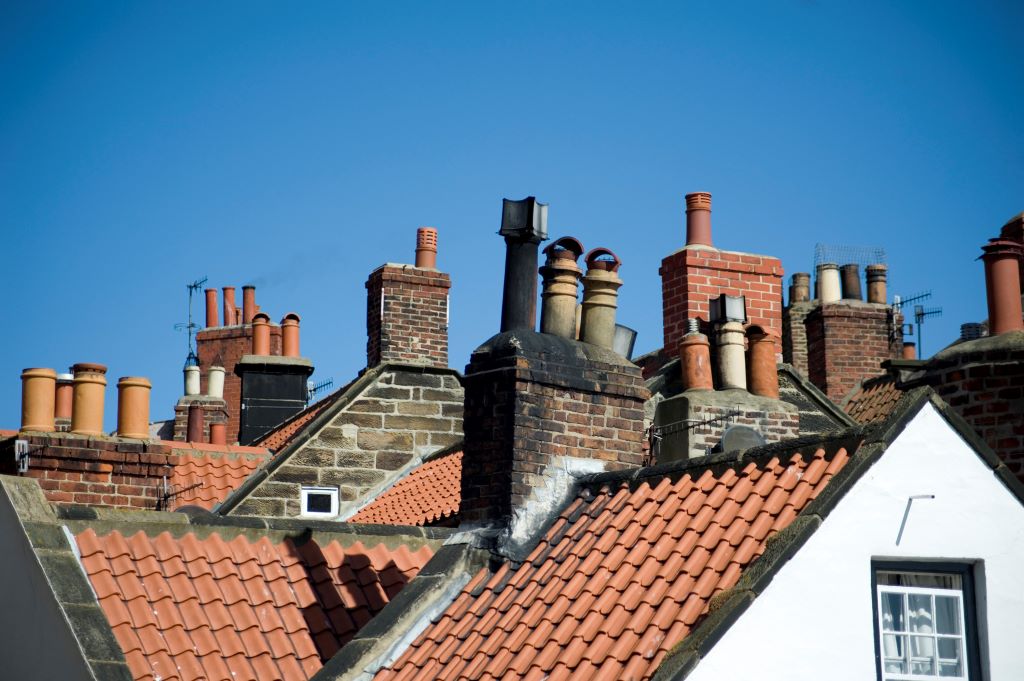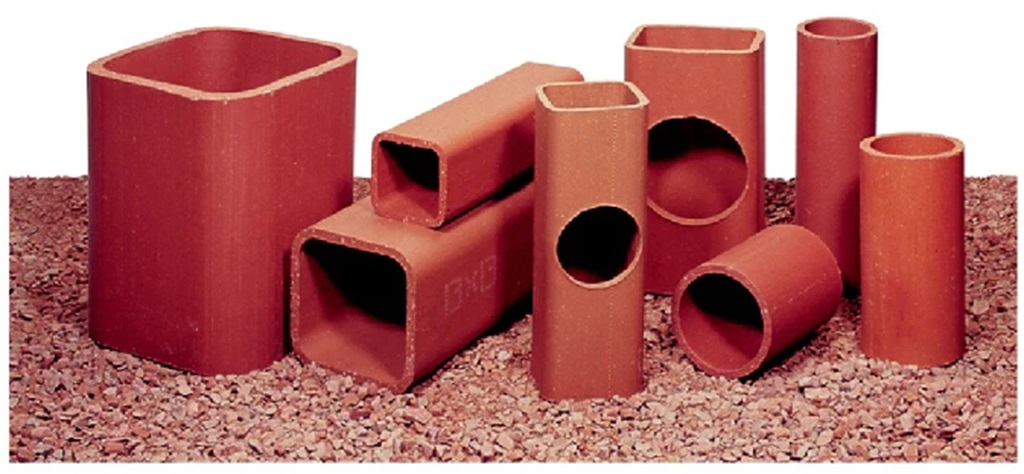A flue liner is an essential component of a chimney that ensures the safe and efficient operation of a fireplace or stove. It is a protective layer that lines the inside of the chimney and shields it from the high temperatures and corrosive byproducts of combustion. Without a proper flue liner, the chimney can deteriorate quickly, leading to a host of safety hazards, including house fires, carbon monoxide poisoning, and structural damage to the home. Clay flue liners have been a popular choice for many years due to their durability, affordability, and excellent insulating properties. They are resistant to heat, moisture, and chemicals, making them an ideal option for both residential and commercial applications. Installing a clay flue liner is a wise investment that can protect your home and family from potential dangers while also improving the performance and efficiency of your heating system.
The Dangers of a Faulty Flue Liner
Before we dive into the benefits of clay flue liners, let’s look at why a faulty liner can be so dangerous.
Your flue liner is the interior surface of your chimney flue. It provides a smooth passage for directing smoke, fumes, and combustion gases up and out of your home. Without a sound liner protecting your flue walls, issues can arise:
Cracking and Deterioration
Faulty liners allow moisture and acidic byproducts to seep into cracks and slowly deteriorate your chimney’s brick or stonework over time. As damage progresses unchecked, it undermines the structural stability of your chimney. No one wants to pay for expensive chimney repairs or, even worse, a total rebuild!
Creosote Buildup
Smoke and condensation create a tar-like substance called creosote that coats your flue walls. A cracked liner gives it ample surfaces and pockets to cling to. As layers build up over time, this sticky gunk chokes your flue and provides a potent tinder for future fires.
Fire Hazards
Faulty liners pose multiple fire risks: cracks allow sparks and embers to escape into wall spaces; damage undermines the flue’s fire-resistant properties; and creosote buildup provides the perfect fuel source for raging flue fires. It’s a dangerous combination when a flue liner fails to do its job properly.
Why Clay Flue Liners Protect Your Home
After learning how a damaged liner can threaten your chimney, it makes sense to protect it properly. This is where clay flue liners come in. Let’s look at the key benefits of installing a clay liner in your existing masonry chimney.
Unmatched Fire Resistance
Clay’s heat tolerance and insulation properties are far superior to alternatives like stainless steel or poured concrete. Clay liners withstand temperatures exceeding 2,000° F without cracking or melting. This keeps intense heat safely channeled inside your flue.
Waterproof Barriers
Clay won’t absorb moisture or allow condensation to penetrate porous flue walls. Its impermeability shields masonry from erosion and ensures chimneys retain their structural stability for decades. No moisture absorption also means no surface area for creosote deposits to adhere to.
Structural Integrity
Unlike fragile metal liners, sturdy clay liners won’t buckle under pressure or suffer punctures over years of use. Their durability strengthens compromised flues and prevents further cracking or deterioration within chimney walls. Tight-fitting clay liners also minimize air gaps that allow heat loss and cold air infiltration.
Acid Resistance
Clay’s chemical makeup stands up to acidic byproducts produced by fireplace combustion. These corrosive substances eat through mortar and erode masonry over time. Impervious clay liners provide a protective barrier that extends the life of your chimney.
Smooth Surface
The smooth glazed surface of clay tiles facilitates continuous airflow. This allows for complete combustion while providing an easy escape route for smoke, fumes and gases. Clay liners prevent airflow disruptions that could send dangerous carbon monoxide back into your living spaces.
Now that we’ve covered the core benefits of clay flue liners. Let’s look at how they specifically protect different elements of your home.
Fire Protection: Keeping Your Home Safe
As we’ve discussed already, faulty flue liners pose multiple fire risks. So how exactly do clay liners prevent fires?
Withstands Extreme Temperatures
Clay liners resist temperatures exceeding 2,000° F. Unlike metal or concrete, clay won’t crack under intense heat stress. This keeps sparks and flames safely contained inside the flue instead of penetrating cracks in damaged flue walls.
Insulates Flue Walls
Clay’s low heat conductivity keeps more warmth inside the flue instead of radiating outward. This crucial insulation protects the structural integrity of flue walls. In contrast, intense heat can damage unprotected masonry over time.
Blocks Embers & Sparks
The durable, non-combustible nature of clay liners stops dangerous sparks and burning debris from escaping your flue. Tight installation leaves no gaps for fire hazards to make their way into your home’s walls or roof spaces.
When it comes to critical home fire protection, clay flue liners are truly in a class of their own.
Structural Support: Preserving Your Chimney
Your chimney withstands temperature extremes, combustion byproducts, moisture and more on a continual basis. Clay flue liners play a key role in maintaining chimney integrity and longevity.
Shields Against Corrosive Forces
As fires burn, chemical reactions produce acidic substances that slowly erode mortar and damage porous masonry materials. Impermeable clay barriers keep these corrosive agents safely contained inside the flue liner so they can’t degrade structural integrity.
Prevents Moisture Damage
Left unchecked, moisture from condensation or exterior elements penetrates deep into chimney walls, causing instability and spalling damage over time. Waterproof clay liners stop moisture migration before it threaten foundational integrity.
Boosts Durability
Clay’s high compressive strength reinforces weakened flue structures. Durable clay sleeves essentially create flues as strong as new within deteriorating chimneys. This fortifies the entire chimney structure from the inside out.
When your home’s foundational stability is at stake, depend on clay flue liners for lasting preservation and protection.
Enhancing Efficiency: Improving Fireplace Function
A properly functioning flue impacts everything from your fireplace’s burn efficiency to your indoor air quality. Here are some of the biggest ways clay liners enhance efficiency.
Smoke Removal
The smooth glazed surface of clay liners keeps airflow steady for complete combustion and rapid smoke ventilation up the flue. An impaired draft from a damaged flue causes smoking problems that pollute interior air. Clay liners prevent this.
Increased Heat Output
Effective ventilation maintains higher combustion temperatures and boosts heat output. Tight-fitting clay liners minimize heat and air loss up the chimney for improved warmth and efficiency.
Reduced Creosote Buildup
The glazed surface of clay doesn’t provide a foothold for sticky creosote deposits. This prevents hazardous buildup that chokes airflow and provides fuel for potential chimney fires. Proper draft and ventilation further deter creosote accumulation.
Clay flue liners optimize efficiency gains compared to makeshift liners or unprotected masonry flues. Warm up faster and breathe easier with a safe clay liner.
Improving Indoor Air: Protecting Your Health
We’ve covered fire safety issues already, but your flue liner also plays a huge role in indoor air quality. Clay liners provide critical protection in the following ways.
Deters Creosote Odors
Burning creosote creates a harsh, bitter odor. Clay liners prevent deposits from accumulating and odor compounds from entering living areas. Your family can breathe easily without the worry of foul air.
Limits Chimney Smoke
Effective draft rapidly vents the smoke outside your home. Clay liners prevent interior smoke pollution from crippled flues that leak into living spaces. Enjoy cleaner air and fewer lingering smoke smells.
Vents Carbon Monoxide
Disrupted airflow sends dangerous carbon monoxide backward into homes, contributing to sickness and even death in severe cases. Clay liners maintain a steady draft so combustion gases vent outside instead of infiltrating living areas.
Ensure your indoor spaces stay fresh and breathable with professionally installed clay flue liners to safeguard air quality.
Gaining Peace of Mind
A properly functioning flue lined with clay offers tremendous peace of mind on multiple levels. Let’s look at why you can rest easier knowing clay liners protect your home.
Reduced Fire Risks
Steady, unobstructed ventilation virtually eliminates smoking issues and creosote buildup that heightens fireplace hazards. Tight seals stop sparks from escaping into walls. Clay liners attack every angle of potential fire danger.
Less Damage to Home
Clay stops moisture erosion, resists combustion acids, and prevents cracking damage within flue walls that undermine structural integrity. Your home stays strong for decades without costly chimney repairs.
Added Resale Value
Documented clay liner installation provides proof to buyers that your home meets critical fireplace safety standards. Expect this to boost property value compared to unlined flue hazards that deter buyers.
Get comprehensively protected with long-lasting clay flue liners. Rest easy knowing your most critical fire safety needs are covered.
Selecting the Best Clay Liner
If you’re convinced of the benefits of installing a clay flue liner, how do you select the right one? Choose the liner size and material composition that matches your flue dimensions and typical usage.
Liner Dimensions
Measure your exact flue dimensions for custom-fit liners sized to your chimney. Ill-fitting liners leave hazardous gaps undermining safety. Precision measurements ensure ideal seals.
Fireplace Usage
Consider your typical fireplace usage (gas/wood burning/multi-fuel) when selecting liner material rated for proper heat ranges. Frequent use needs more heat tolerance. Light use allows some flexibility.
Regional Building Codes
Adhere to regional regulations and building codes related to flue liners. Improper materials or installation could violate local statutes. Consulting your municipal building department prevents overlooked issues.
Installer Expertise
Choose qualified specialists certified in clay flue liner installation. Professionals determine ideal products and provide expert leakage testing and protective finishes you can’t duplicate on your own.
While clay liner installation requires an initial investment, it returns dividends through enhanced safety, efficiency and chimney longevity.
Frequently Asked Questions
How durable are clay flue liners?
Properly installed clay liners often outlive the homes they’re placed in. Unlike metal liners prone to corrosion and punctures, clay doesn’t degrade under prolonged heat and chemical exposure. Liners over 800 years old found in European buildings attest to clay’s durability.
Why choose clay instead of metal or concrete liners?
Clay possesses superior heat tolerance compared to metal and concrete alternatives that can crack over repeated heating. Clay also resists chemical reactions and withstands structural pressure better. Additionally, clay’s smooth surface deters creosote accumulation not possible with porous concrete that requires frequent cleaning. Overall, clay delivers unparalleled durability and performance.
How difficult is clay liner installation?
Installation isn’t necessarily difficult but does require chimney inspection for proper sizing and custom fits. Rigid clay segments are installed similarly to concrete or metal liners by stacking through the flue’s top opening. However, hiring certified specialists ensures ideal seating and professional exterior finishes.
Can I install a liner myself?
While DIY videos make installations look straightforward, improperly joined liners leak deadly gases, smoke and embers into wall spaces. Improper finishes also crack, allowing moisture damage. Engaging certified technicians who assume liability for their work is highly recommended.
How much does professional clay liner installation cost?
Project costs range widely from $1,000 to $5,000 based on liner size, materials, access challenges, location intricacies and more. While pricier than makeshift alternatives initially, clay liners prevent exponentially higher costs over decades from chimney repairs, fire damage, insurance claims and potential medical bills.
Last Words
If your unlined masonry chimney lacks sufficient protection, now is the ideal time to schedule an inspection. Damaged liners only deteriorate further over time. Investing in clay flue liners brings immediate enhancements in safety, efficiency and structural stability.
As an added consumer safeguard, reputable dealer associations back technicians who install defective liners. You get full accountability alongside certified expertise. The complete guide to selecting the best roofing material for your home not only offers valuable insights into safeguarding your dwelling but also mirrors the wisdom of making enduring investments, much like the longevity of clay flue liners that ensure your family’s safety and cozy fireplace warmth for decades to come— a peace of mind and wise investment you won’t regret.

















